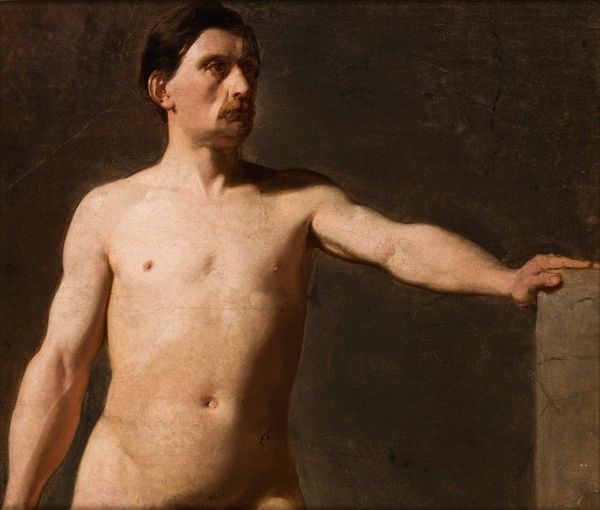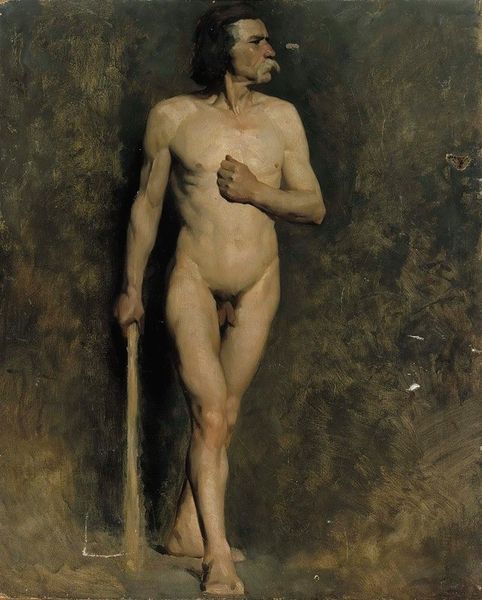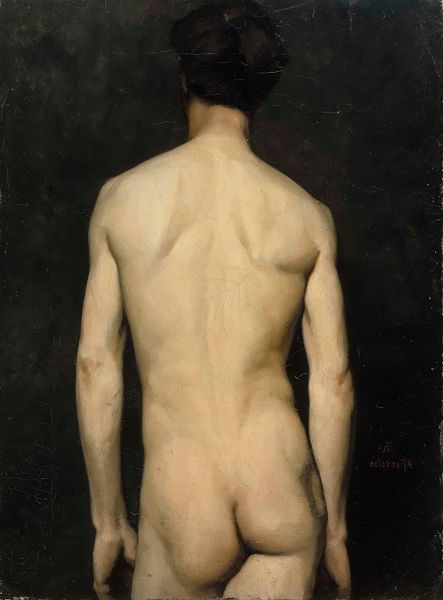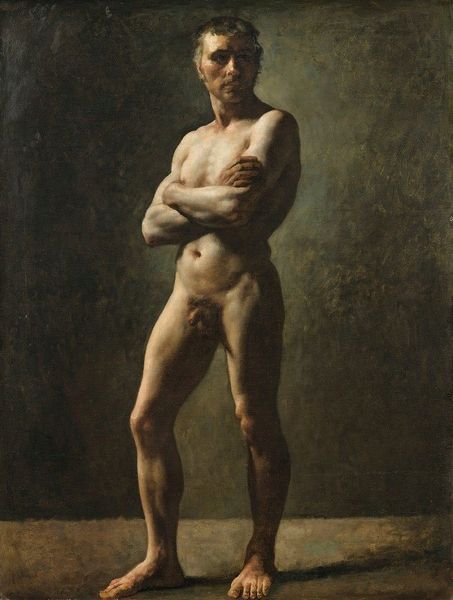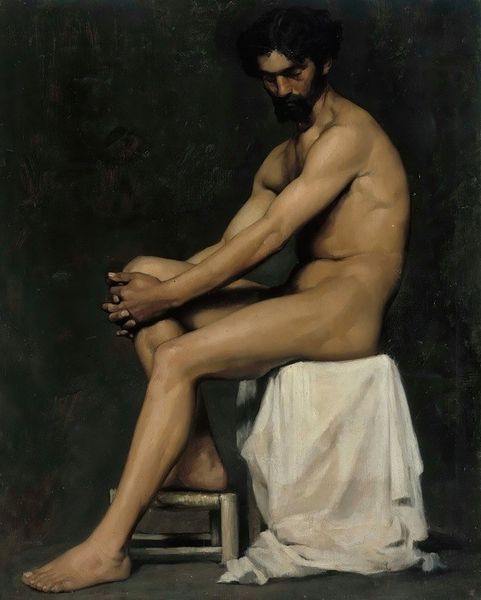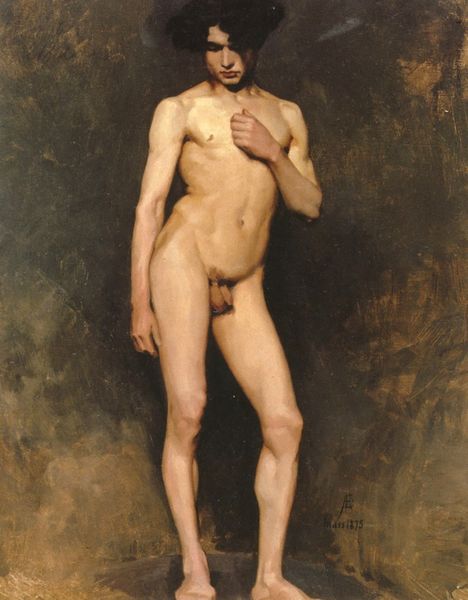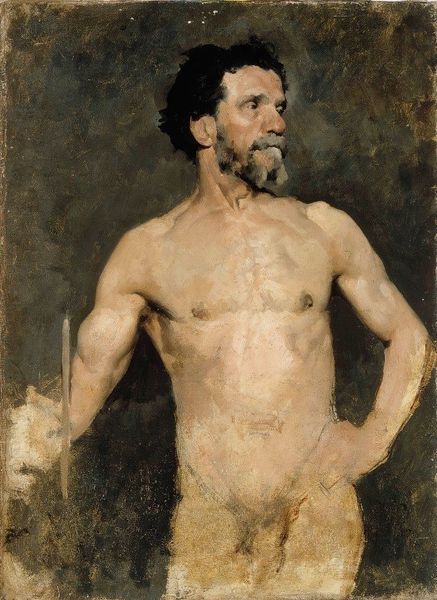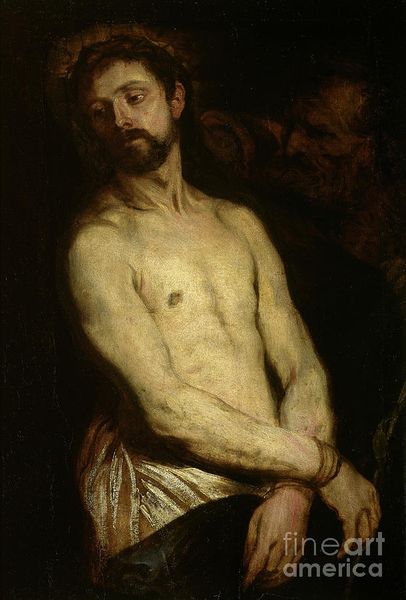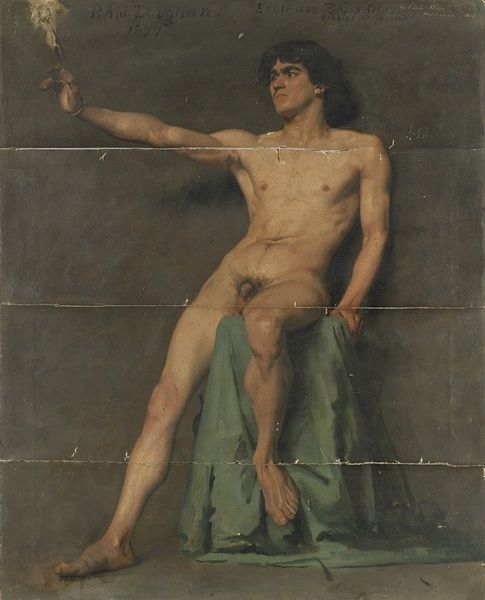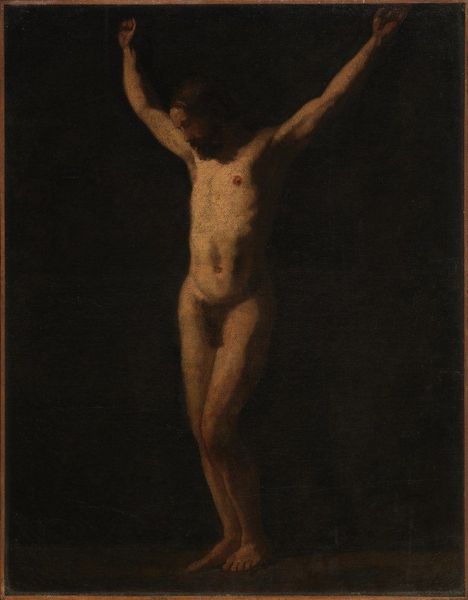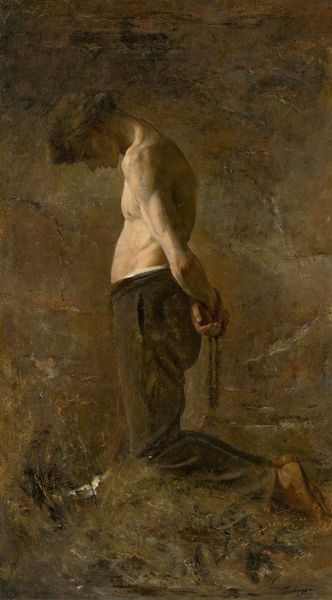
painting, oil-paint
#
portrait
#
figurative
#
painting
#
oil-paint
#
charcoal drawing
#
figuration
#
charcoal
#
nude
#
realism
Copyright: Public Domain: Artvee
Curator: Here we have Gustave Courbet's "Étude de nu," an oil painting from around 1842. Editor: My first impression is one of shadowed introspection. The figure, bathed in a muted light, seems caught in a moment of pensive self-examination. The tight cropping lends it an almost uncomfortable intimacy. Curator: It's an early work, before Courbet cemented his commitment to Realism, but the seeds are already present. Nudes, throughout art history, have often served as vehicles for idealization or allegory. But Courbet presents us with a rather unidealized, very human figure. The dim, tenebrous ambiance reminds us that such depictions draw on, but also reject, established pictorial conventions. Editor: Absolutely, and consider how nudes have historically functioned within the male gaze. Courbet complicates this, perhaps unintentionally, by depicting a male nude. It makes me question: Who is the intended viewer, and what power dynamics are at play? Curator: Interesting. Traditionally, male nudes often represented heroic ideals or religious figures, echoing classical sculpture. This piece disrupts that association, leaning into a more grounded portrayal. Editor: Right, there's a vulnerability here, a departure from those glorifying narratives. And in his defiance of academic painting, Courbet also seems to be subverting traditional ideals of beauty itself. You have to admire him for that kind of progressive work. Curator: Well, it’s a painting caught between eras and influences, wouldn't you agree? We see the echo of past styles combined with this emerging commitment to unflinching observation that would come to define Realism. Editor: I see a boldness too, not only in the direct gaze but in his subtle defiance of expectations, a questioning of established canons. I'm compelled by the questions it raises regarding historical male artists representing other male figures as the object of art. Curator: Yes, the symbolism is multi-layered here. Thanks for sharing those thoughts with me today! Editor: Thanks for guiding me.
Comments
No comments
Be the first to comment and join the conversation on the ultimate creative platform.

